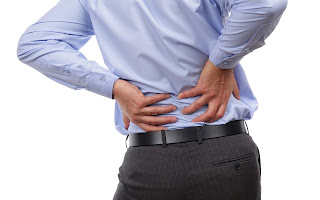FLOATATION THERAPY FOR NECK AND BACK PAIN
Floatation therapy has achieved remarkable success in easing chronic pains such as neck and back pain, and helps with correcting spinal misalignment issues in a regular treatment program.
Statistics show that chronic back pain is next to heart
disease. It is estimated that 70–90% of people will suffer from lower back pain
in some form at some point in their lives.
Origination and individual perception of pain are related to
the degree of relaxation in the muscles and to the general degree of stress in
the nervous system.
The physical relaxation produced by the sensory deprivation
tank makes it an extremely beneficial healing environment, especially for those
with injuries or chronic pain. Since the effects and stresses of gravity are
lessened, the body is able to more efficiently allocate its resources towards
maintenance and healing.This alleviation in conjunction with other therapies
like massage, yoga and other exercise can lead to prolonged periods of respite
from pain.
How Does Float Therapy Relieve
Back Pain?
An increasing body of scientific evidence shows that float
therapy can significantly alleviate pain, for a number of reasons:
1. Reduction of overstimulation of
the nervous system
As a physiological form of relaxation, floating has an
effect on the subjective perception of pain and on the autonomic nervous
system, the system of pathways which transport pain impulses. A radical
reduction of exterior sensory stimuli reduces stimulation of the nervous system
so perceivably that overstimulation is reduced and pain is perceived as being
less intense.
2. Increased endorphin release
Relaxation and the reduction of sensory stimuli contribute
to an increase in the release of endorphins and can thus be linked to pain
relief also at bio-chemical level. A higher level of natural opiates in the
blood of test persons was reliably tested in various examinations.
3. Increased magnesium absorption
Magnesium plays an important role in pain management, as it
is a natural pain killer besides enhancing many physiological bodily processes.
Studies show that magnesium treatment immediately following injury
improves both short and long term outcomes among patients with spinal cord
injury. Magnesium is easily absorbed via the skin so with over 600kgs of Epsom
salts in each of our pods, you’ll be sure to absorb a whole lot of it!
4. Orthopaedic benefits of being
weightless
Floating in a saturated solution of Epsom salt enables the
body to take a position which is unlike lying on a bed, bath or any other
surface. This particular position is characterised by:
The spine is
completely straight
Individual
vertebrae are not functionally twisted
All muscle
groups can relax simultaneously
Joints,
intervertebral discs, ligaments & bones are relieved.
 Hereby acute
and chronic tension is released and slipped discs, joint pains, sciatica,
lumbago, pulled muscles or sprains improve.
Hereby acute
and chronic tension is released and slipped discs, joint pains, sciatica,
lumbago, pulled muscles or sprains improve.
Float Therapy And The Spine
Nearly all types of back pain originate in the spine. The
spine carries the weight of the torso and has to therefore adapt to pressure in
various situations.
Misalignment, one-sided strain, or age-related wear and tear
often lead to chronic pain.
The spine is divided into three major sections:
Cervical spine
Thoracic spine
Lumbar spine
Each section is associated with distinct problems and kinds
of pain:
Cervical spine
Although the cervical spine carries the least amount of
weight, blockages in the joints often lead to pain.When suspended in a
floatation pod, the vertebrae lie free from any pressure or contortions and are
thus able to regenerate in a completely new way. The pain-relieving effect of
this treatment is very plausible.
Thoracic spine
The thoracic spine is less often a source of pain, but pain
can often be very intense. The ribs are attached to the spine over joints where
incorrect movement or accidents can lead to problems.Experience has shown that
the healing process of bruising, breaks or sprains is accelerated when the
thoracic spine is not weighed down by gravity and lies in a completely
relaxed position.
Lumbar spine
Most cases of back pain originate in the lowest section of
the spine, as it carries the entire weight of the torso. The inter-vertebral
discs, which act as the spine’s shock absorbing system, lose a portion of their
fluid every day. The degree to which the discs are replenished diminishes as we
grow older or if the spine is subject to a lot of stress and the
inter-vertebral disks slowly shrink. Muscle tension decreases and the lumbar
spine arches forward. This leads to chronic back pain, which in some cases can
seriously impede one’s range of motion.
Floating counteracts the above processes by enabling
inter-vertebral disks to regenerate and by slowing down spinal deformation
processes.
Slipped discs are often associated with the lumbar spine.
When a disc is misaligned, lumbar tissue can press against the spinal nerves
causing intense pain that may even radiate down into the legs, it may irritate
the nerves or cause other symptoms. Floating again can be used as a
supportive post-operational therapy.
Float therapy can serve as a valuable supplement to physical
therapies and exercise to alleviate pain and naturally heal spinal issues.
Chronic back pain can effectively be relieved by floating.
Establish a regular float practice and experience it yourself!
Experience complete weightlessness and pain relief in a non
invasive and drugless method of treatment.



Comments
Post a Comment